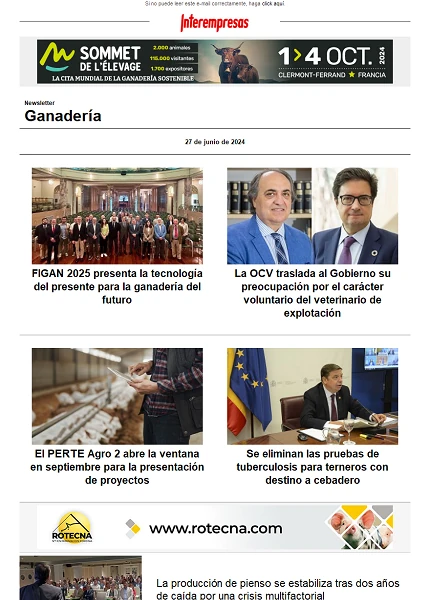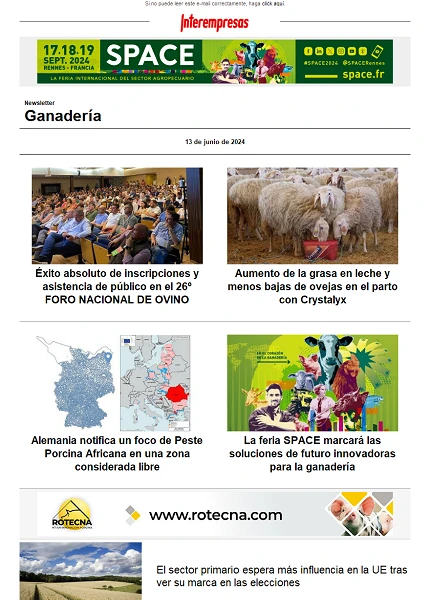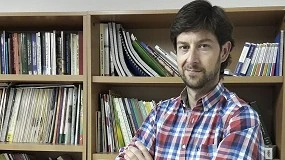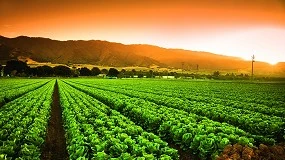Anagrasa discussion on impending legal and environmental changes for animal by-products
August 29, 2011
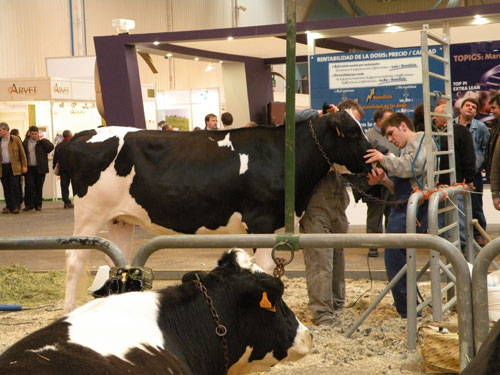
The most relevant topics for the processing of fats and animal by-products sector industry came out, on 28 June, during the technical seminar organized by the National Association of industries transformer of fats and animal by-products (Anagrasa), in Toledo. Among the hundred people present, were from partners of this organization to representatives of the Ministry of environment and Rural Environment and marine (MARM), along with several agri-food and energy sectors from public.
After a few words of welcome from Valentín García, President Anagrasa, opened the cycle of lectures with the Conference on biofuels and its impact on the industry of animal fats, by Beatriz Álvarez, project manager of the biofuels producers Association (APPA). The rapporteur spoke particularly on environmental, social, economic and technical advantages of these energy resources. "The European Commission (EC) devoted to biofuels as the main sustainable alternative to gasoline and diesel in transport in the next decade", he stressed. And is that the directive 2009/28/EC (directive of renewable energies - DER) establishes the goal of 10% of renewable energy in transport in the face of sources by the year 2020, in addition to sustainability criteria for biofuels that minimize greenhouse gas emissions greenhouse (GHG). "This obligation will promote the use of animal fats and oils used in the manufacture of biodiesel," explained Beatriz Álvarez.
In addition, the DER establishes the contribution of biofuels from waste, residues, non-food cellulosic material and lignocellulosic material shall be deemed that it is equivalent to twice as many other biofuels. "It is expected that the transposition of this Community regulation in Spain, still in process, included the possibility that produced biofuels only partially from these materials will apply double counting only the part of the biofuel manufactured from the substance", he added. In this sense, you will adopt a definition and/or listing of the materials of this kind and is expected to the inclusion of animal fats and oils in this inventory. For the Association of producers of biofuels, it is desirable to draw up a positive list, which will reflect what the materials that have twice and "so avoid confusion", as explained the representative of the APPA.
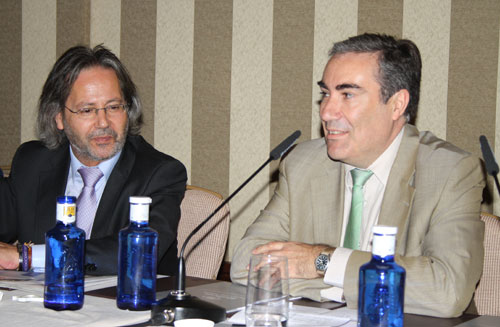
The food crises of the 1990s, as the epidemic of BSE bovine spongiform (BSE), exposed the role of animal by-products not intended for human consumption in the spread of communicable diseases. These by-products should be excluded from the food chain. From the point of view policy, Regulation (EC) No. 1774 / 2002 of the European Parliament and of the Council of 3 October 2002 lays down the health rules on animal by-products not intended for human consumption. The regulation aims to ensure a high level of health and safety, and prohibits, in particular, food among animal species. I.e. that the diet of an animal species include proteins derived from other copies of the same species - or cannibalism - bodies representing an additional risk of disease transmission.
For its part, Regulation (EC) No 178/2002 represents the cornerstone of the new European legislation on food safety. Using the approach "from farm to table", this regulation aims to maintain this level of health and safety throughout the food chain serving of the latest scientific research.
Animal by-products are defined as entire bodies (or parts) of animals or animal products not intended for human consumption, including ova, embryos and sperm. In total, these by-products represent more than 15 million tons of meat, dairy and other products, including manure. These by-products are discarded or transformed so that they can be reused in various fields, including cosmetic or pharmaceutical industry and for other technical uses.
The regulation lays down animal and public health standards applicable to the following circumstances. On the one hand, to the collection, transport, storage, manipulation, transformation and use or disposal of animal by-products. On the other hand, to the implementation in the market and, in specific cases, export and transit of animal by-products and derived products.
Possible reintroduction of animal proteins transformed into Community feed
Of face to the next five years, the strategy of the European Commission directs to review different appearances related with the sector grazier of the European Union (EU). For example, the list and the limit of age of the MER (Specific Materials of Risk), the strategy of surveillance of the EEB (Encephalopathy Espongiforme Bovine), the measures of eradication of the tembladera and the prohibition of the inclusion of determinate products in the piensos. In relation to this last point, Elena Martínez Valdivia, general deputy director attaches of Conservation of Resources and Animal Feeding, of the General Direction of Agricultural Resources and Graziers of the MARM, did reference to the animal proteins transformed (PAT) and his field of application. “The future reintroducción of the PAT in the animal feeding plasma in a second leaf of route of the EET (Encephalopathies Espongiformes Transmisibles), whose next milestone for the lifting of the prohibition of the PAT is the vote in the Plenary of the European Parliament (PE) on 5 July”, affirmed Martínez Valdivia, in his moment. The resultant decision would expose to query of the Council and the States member of the EU.
To way of context, the prohibition of the use of the Animal Proteins Transformed (PAT) for animal feeding, does already almost 10 years, caused several repercussions, especially environmental. A prohibition that established in base at the beginning of caution beside the rest of sanitary measures like answer to the crisis of the Encephalopathy Espongiforme Bovine (EEB). In consequence, intensified the production of soya/soy in the Cone South, generated an increase of the deforestación and the broadcast of gases of effect invernadero by the transport, in addition to the loss of international competitiveness in the manufacture of piensos, by part of the EU. “Until it know the result of the vote of the European parliament, what remains clear in the draft of the leaf of route to raise the veto to the PAT, is to avoid the cannibalism and the physical separation of the lines”, manifested the spokesman of the General Direction of Agricultural Resources and Graziers of the MARM, during the technical day./p>
From Anagrasa it qualifying the Spanish position is inclined by lifting the ban, arguing the guarantee represents the fulfilment of sanitary conditions for the transformation of material origin and processed by-products plants. A position that also ensures compliance with the requirements of traceability and of specific conditions (HACCPP) by processing animal feed establishments and the availability of suitable analytical techniques.
To date, have transcended the six areas in which there may be changes in the near future according to the second road map on the EETs, contained in the document of the European Commission on 'The strategy 2010-2015 against the communicable spongiform encephalopathies'. In this document, the Commission determines the changes of new application on the measures for combating the EETs, and especially against encephalopathy spongiform coil (BSE), in view of the advances that have occurred and of new scientific evidence. Within these areas, highlight the lifting of the ban on meat meal in non-ruminant species (pigs, birds and fish), avoiding the cannibalism, the reduction in number of the MER (specific risk materials) and the gradual elevation of the age of the animals subjected to the mandatory test of Bovina spongiform encephalopathy.
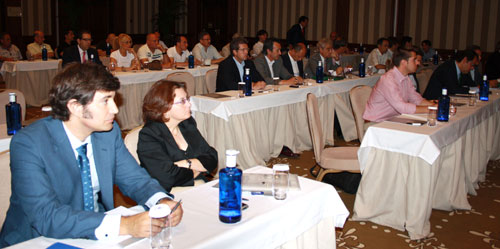
Since the draft Royal Decree SANDACH to the reintroduction of the PAT in animal feed and the Act on waste and soils Contaminados. In the day there was a discussion about the hot topics for the producers of animal by-products.
Draft Royal Decree SANDACH, ready in less than two months
In the formal process of allegations by the sector, the project of Royal Decree establishing the health rules on animal by-products and derived products not intended for human consumption and which will develop the aspects that can be regulated by the regulations, will not be published in one period less than two months. This was stated by Manuel Pablos López, head of section at the General Sub-Directorate for farms and systems of traceability of the MARM, within the framework of this meeting.
The new legal framework is based on the Regulation (EC) no 1069 / 2009 of the European Parliament and the Council and the Regulation (EC) No. 142/11 of the Commission which implements the previous regulations. "It is intended to prevent and minimize the risks to public and animal health posed by such products and, in particular, to preserve the security of human and animal food chain." "At the same time, try reducing the administrative burden, simplifying controls and reduce costs to operators", argued Pablos López.
According to the ministerial representative made public, there are changes in the requirements of these by-products processing plants, as well as intra-Community shipments, import and export. Also, the Rapporteur came to describe the rest of modifications in the wording of the Royal Decree, in the light of the interventions of the audience of the technical day looming difficult to understand. Controversial issues include of the small quantities of by-products (up to 20 kilos) to withdraw from the butchers and reverse logistics, given the volume involved in traditional distribution (400 tons), according to sources at Anagrasa.
The law of waste and soil Contaminados and its advantages for producers of hazardous waste
For its part, Alicia chicken Albéniz, the Subdirectorate-General for sustainable production and consumption, of the Directorate-General for quality and environmental assessment of the MARM, spoke about the waste and soils Contaminados Act. The content of the standard is quite closed and only subtract the go-ahead from the Congress of the amendments adopted by the Senate. Albéniz summed up the implementation of this law to the by-products in the following terms: "when are they intended for incineration, in landfills, or to be used in a biogas or composting plant". However, the corpses of animals that have died so different from the sacrifice will be deleted in accordance with regulation 1069 / 2009. This law seeks to make more flexible the framework for the authorisation and communication of the producers of waste as well as reducing the administrative burden for producers of hazardous waste.
Finally, Marta Puig, representative Anagrasa, within the Standing Technical Committee of EFPRA, the European Association of processing industries of animal by-products, finalized the turn of conferences. In doing so, he stopped in various matters of interest to the sector at Community level. For example, dealt with regulations (EC) 1069 / 2009 and 142/2011; the transit, export and import of the by-products of category 1 and 2 and PAT; the definition of the category of frying oils; dioxins; the reintroduction of the PAT, (EU) 575/2011 the Commission Regulation of 16 June 2011 on the catalogue of raw materials for animal feed and the draft of the Royal Decree of SANDACH, and finally, specific rules for the application in Spain of the regulations 1069 / 2009 and 142/2011.
The Act of closing of the session was provided by Emilio García Muro, Assistant Director-general of farms and traceability systems of agricultural and livestock resources of the MARM and Secretary of the National Commission for SANDACH.
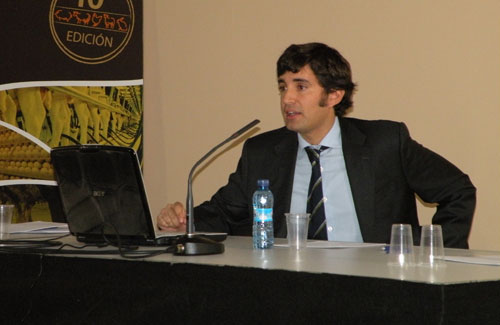
The fair of Zaragoza was the venue chosen to publicize the new legal framework in the field of animal by-products and derived products: Regulation (EC) No. 1069 / 2009 of the European Parliament and the Council and the Regulation (EC) No. 142/11 of the Commission, of direct application on 4 March. Coinciding with the celebration of FIMA Ganadera, was held the presentation ' new Community rules on animal by-products (SANDACH), in charge of Manuel Pablos López, head of section at the Subdirectorate-General of operations and systems of traceability of the MARM, on 16 March. Barely two weeks after its entry into force, organized a Conference on both Community regulations, where the Ministry spokesman also announced the development of the Royal Decree SANDACH, at the stage of formal processing time. "As a main novelty, this regulation introduces a number of endpoints from which it is understood that by-products and derived products are safe, can be applied outside their usual scope." Also laying down a series of requirements proportional to the real risk, based on experience to date, to determine the characteristics of the transport, the reuse and recovery of certain by-products. "Also reduces the administrative burden, expands the possibility of use of the by-products for the feeding of protected species and privatize criteria for the importation of certain by-products", highlighted Pablos López.
During the Conference, the representative of the General Sub-Directorate for farms and systems of traceability of the MARM, he detailed one after another the developments referred to in the categorization of the raw materials based on the types of risk. Under the category 1 considered by-products that have a higher risk for animal and public health. Also allocate them to food, allowed certain limited uses, under conditions allowing the regulation, as it is the production of biogas and other fuels. "As a novelty, these by-products are considered suitable for technical uses, i.e., for the production of cosmetics, medicated, and so on". The catalogue remains that already existed: animals associated with the Transmisible spongiform encephalopathy, parts of channels containing MER, animal circus, experimentation, Zoo, or company, animals subjected to illegal treatment, waste water from category 1 and wild animals is suspected of transmitting disease. "It is necessary to remember that if some by-product of category 1 is mixed with another 2 or 3, the whole is valued as category 1," he warned.
For its part, category 2 products present a moderate risk, so it will exploit more although their uses are restricted. Its use is permitted as fertilizer, to generate biogas, for example. Within this classification are grouped by-products as manure, animals slaughtered in the eradication of communicable diseases, wastewater, copies, rejected at the border checkpoints, as well as certain polluting substances. For the first time set out in category 2, the animals not fit for consumption due to the presence of foreign bodies, the poultry killed in egg and fetuses, as well as eggs and sperm not intended for reproduction. "This category - continued - is a kind of wastebasket containing all by-products or materials that are not categorized into a group." "As a result, they go to category 2 by the precautionary principle".
And finally, he made reference to category 3, where the risks are lower and the possibilities of valuation higher, including that of possible raw material for animal feed, within the limitations it imposes regulations. This category includes animals being fit for human consumption not him, also to all those who have no signs of disease through blood, regulating for the first time to ruminants subject to ETB tests with negative results, as well as those food and feed products expired or stored in containers broken. They also fall to certain by-products like feathers, skins, hooves, helmets, wool, blood and placenta (these latter two for the first time). "The placenta is considered a novelty category 3". "This is due to that I have received a lot of queries due to its large number of utilities". Category 3 also contemplates the shells of shellfish with soft tissue, the co-products and one-day chicks slaughtered for commercial reasons.



